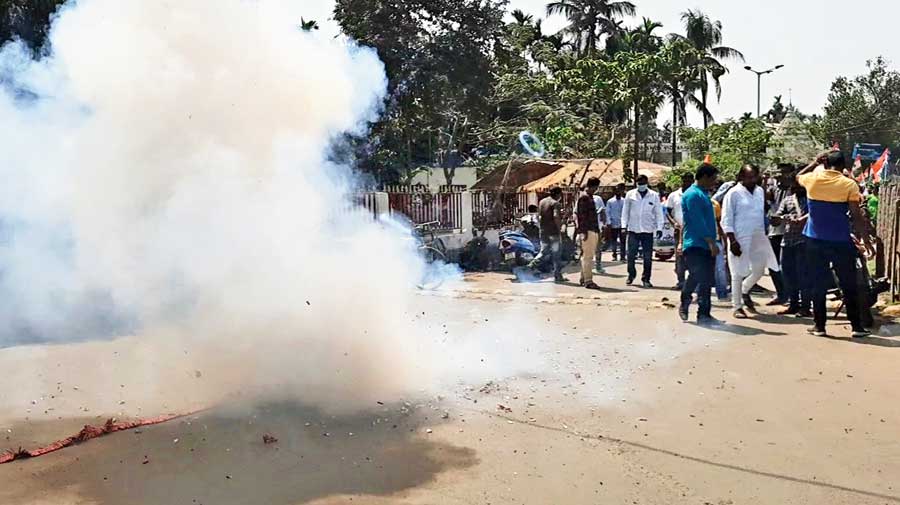A drop in temperature because of a late Diwali, air quality varying between “poor” and “very poor” in most of the city and the absence of rain made Diwali 2023 the worst in the last five years, said air quality experts.
To make things worse, firecrackers burst across the city. Residents of multiple places said the air was filled with sounds of firecrackers and sky lit with fireworks.
“It started around 6pm. A cracker was going off almost every second,” said a Kasba resident.
Of the seven continuous air quality monitoring stations in Kolkata, six recorded “poor” air at 10pm on Sunday. These are located in Ballygunge, Bidhannagar, Jadavpur, Fort William, Rabindra Sarobar and the Victoria Memorial.
The seventh station — located on the Rabindra Bharati University campus on BT Road — recorded “moderate” air.
On Diwali 2022 (October 24), the monitoring stations reported “good” and “satisfactory” air as the city received rain and strong winds blew through it under the influence of Cyclone Sitrang.
The Met office had recorded about 5mm of rain between 8.30pm on October 23 and 8.30pm on October 24.
In 2020 and 2021, fewer firecrackers had been burst because of Covid-induced restrictions, and that resulted in a far cleaner air on Diwali.
In 2019, Diwali had fallen on October 27, more than a fortnight earlier than this year. The monitoring stations had reported “satisfactory” and “moderate” air.
“The fortnight between late October and mid-November makes a lot of difference. By mid-November, there is a drop in temperature and the onset of winter-like conditions,” said Anumita Roy Chowdhury, an air quality management specialist.
“The air quality in Kolkata has dropped to ‘poor’ and ‘very poor’ categories. The emission from fireworks added more pollutants to the already trapped pollutants in the air,” said Roy Chowdhury, executive director of the Delhi-based Centre for Science and Environment.
Air quality management specialists said that even the crackers that did not make sound, but only emitted light, were dangerous. Scientists said light-emitting crackers contain heavy metals, which float in the air for long periods. Inhaling air filled with such metals is like inhaling poison.
Some of the metals commonly used in crackers are lead, cadmium, sodium, zinc, copper, magnesium and aluminium.
“Aluminium produces white colour, iron produces orange, sodium compounds produce yellow, copper compounds produce blue and strontium carbonates produce red colours,” said an official of the Bengal pollution control board.
“Lead can impact the central nervous system, cadmium affects the kidneys and magnesium can cause fever. Exposure to nitrates can cause mental impairment. Sodium can cause skin problems, zinc can cause vomiting and copper can lead to respiratory tract irritation.”
There are pollutants in the air during summer and the monsoon, too, but they are dispersed faster because of meteorological conditions.
Stronger winds during summer blow away the pollutants. Higher temperatures warm up the air, which rises and takes away the pollutants.
The dispersal slows down with a drop in temperature as winter approaches.






